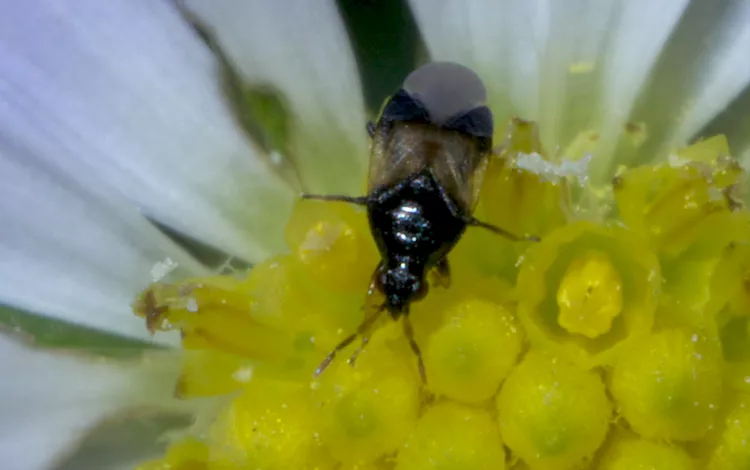Minute pirate bugs are usually felt before they're seen. These tiny insects are oval or triangular and just 1/5 of an inch long, but they bite with an impact way out of proportion to their size. Don't worry, though. The bite feels painful while it's happening, but it usually doesn't keep hurting afterward and might not leave any visible damage. Some people experience a reaction similar to a mosquito bite, while other bite sites just turn a little red, and some lucky folks do not react at all. There is a small consolation if one of these insects nips you.
"The bugs are not quick to fly following biting," says Dr. Donald Lewis, Professor Emeritus of Entomology at Iowa State University, "so the victim usually has the satisfaction of removing the offender from the ranks of the living."
What Are Minute Pirate Bugs?
Minute pirate bugs, a type of insect known as flower bugs (Orius spp.), are found all over the country, and there are more than 500 species worldwide. During spring and summer, "they are busy full time eating small insects, mites, and their eggs by stabbing the prey with their blunt beak and sucking them dry," Lewis says. Plant pests such as aphids, thrips, and whiteflies don't stand a chance around minute pirate bugs, so it's good to have these beneficial insects in your garden.
Humans and minute pirate bugs clash when the bugs take flight in late summer. "The adults that are fully grown and preparing to hibernate through winter are very mobile and come into contact with us," Lewis says. "We are not food for pirate bugs, and they do not bite to feed on blood. I suspect they have to take a taste to confirm that we are not food. Then they move on."
Minute pirate bugs may sometimes be confused with no-see-ums, which are also very small and actively bite people during summer and fall. However, no-see-ums are a type of fly that look a bit like mini mosquitoes, and they're usually more of a problem near fresh-water habitats like lakes.
There's a ridiculous urban legend that the pain of a minute pirate bug bite comes from urine that the bug excretes while biting. Lewis is quick to debunk the myth. "There is absolutely no truth to the bizarre claims that minute pirate bugs pee on you or excrete acid to burn your skin."
How to Prevent Minute Pirate Bug Bites
The best defense against minute pirate bugs is clothing choice and timing. They seem to be attracted to light colors, Lewis says. Wearing long-sleeved, dark clothing outside in late summer and fall may help you avoid pirate bug bites. Working outside after dark and on cool, cloudy days can help, too, because these insects seem to be more active on warm, sunny days.
Most scent-based insect repellents don't affect minute pirate bugs; if you use pesticides, you'll only reduce their pest-control abilities in your garden. Keep in mind that the biting behavior only happens for a short window and will stop with the arrival of cold temperatures.




















